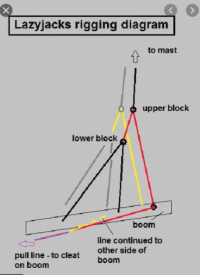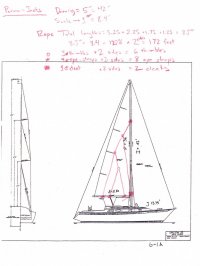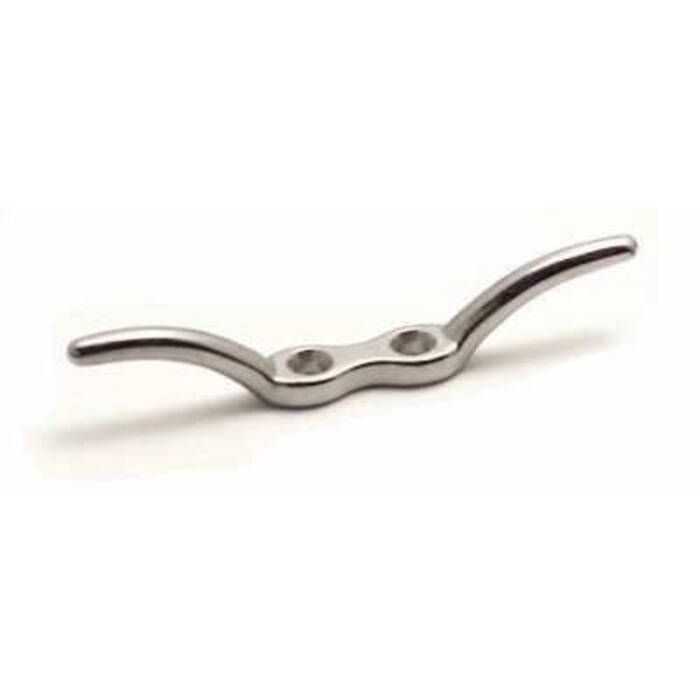I went back and forth on the lazy jack system so many times before I settled on my design and it is working great for me on my 33RH which has a 300 sq. ft main and a 14' boom.
Basically I opted for the simplest design. I have a similar layout to what Geoff W. posted in his diagram. We used 1/4" dyneema with a small pulley in each side of the mast (about 2/3 way up). Each side is separately retractable so that I can pull them to the mast (and along the bottom of the boom) and tie them off on a little 5" nylon cleat (1 on each side). The sail is then covered with a standard sail cover.
You have the choice of deploying your jacks at the dock before you sail or deploying later, in preparation for lowering the sail. There are advantages to each method. I kind of like to deploy them later because it makes for a really quick mainsail raise; you don't have to worry about battens getting caught on the jacks or sail alignment with midpoint of jacks.
After seeing the Vendee Globe race, where almost every boat had some sort of "stack pack" arrangement, I sort of regretted not going with a stack pack with integrated lazy jacks (and cover), but then a sailor next door to me in my slip warned me not to even consider a stack pack in our area as they get full of water when it rains. So, I am happy with my setup now

A things I've noticed since using them for several months (and others might want to comment).
- I choose a simple 3 leg system (as the one shown in Geoff's diagram. on a 14' boom. I have an old sail and it is used to be hand flaked in a certain way, so it does not come down into a nice flake (accordian-like

- some parts of sail to fall off, I do have a bit of tidying to do at the dock to tie up my sail, but it's just a few minutes of work.
- The nylon cleats seemed like a good idea (no corrosion and low working load requirement), but the Dyneema does tend to slip around on it and just one cleat hitch doesn't really hold it tight. It's not a big deal, but I may think of using small clutches or something quicker than a cleat eventually.
- Mast pinging. When you retract the lazy jacks, the hardware (blocks or sliders) rest against the mast. Even though I have very lightweight nylon hardware, it will resonate with the wind and bang on the mast, disturbing your liveaboard neighbors. Again, not really a problem for most people who live in areas where the wind shuts off most nights.. I solved this with a few bungee chords with nylon clips that pull the lazy jack lines a few inches away from mast (and connect jack lines to shrouds with 1/4" bungee).
If you are interested in my system, I will take some photos next time I sail saturday. I had some one help me install the system - it's not a big deal though. If you are willing to climb your mast and tap a few holes for the pulleys and you can splice dyneema, it is a very simple setup. Knowing how to do it now, I would do it myself next time.





